Asilomar 2018 32nd Annual Asilomar Conference
The Weekend Of February 16 - 19, 2018
|
The tax deductible portion of your PBKNCA registration is $62 per person.
This is for the tax year corresponding to the date on your registration check made out to PBKNCA.
|
|
We are working 2019 - go here
|
Where is Asilomar? The beautiful Asilomar Conference Grounds was designed in the Arts & Crafts style by architect Julia Morgan and is located near Monterey, California. We have held our conference there for the past 31 years. For more see the Wiki
Sign Up For The Upcoming AsilomarIf western culture is shown to be rich it is because… It has tried to dissolve harmful simplifications through inquiry and the critical mind.” – Umberto Eco
As the news cycle spins ever faster, it is time for that annual change-of-pace weekend in the spring when Phi Betes gather with family and friends for fellowship, learning and exploration.
Past attendees describe the event as a much-needed renewal for body, mind and soul. Where else can friends meet for provocative talks with leading scholars and artists, while relaxing in world-class architectural gems and hiking the stunning Monterey coast? A preview of this year’s plans is below; for details on last year’s event, visit http://www.pbknca.org/asilomar/asilomar.2016.phi.beta.kappa.pbk.php .
Single Occupancy: $851.24
Double Occupancy: $574.13 per person
If you have questions on the program, please contact dfrontczak@scu.edu. For registration matters, please contact Barry Haskell at bghaskell@comcast.net..
Deirdre Frontczak, Asilomar Chair
|
George Anders, Stanford, B.A., Economics, Friday evening Work's Provocative Future
George Anders is an editor at large at LinkedIn and the author of five books, including his latest, You Can Do Anything: The Surprising Power of a Useless Liberal Arts Degree. Earlier in his career, he worked as a writer or bureau chief for The Wall Street Journal, Forbes, Fast Company and Bloomberg View. He is a ΦBK Stanford graduate with a B.A. in economics and a transcript that includes brief journeys into everything from Slavic literature to genetics, constitutional law and the history of film. In 1997, he shared in the Pulitzer Prize for national reporting. |
|
Fred Lawrence, J.D., Public Policy / Secretary, Phi Beta Kappa Society, Saturday morning The Contours of Expression: Free Speech and Civility
Frederick M. Lawrence is Secretary and CEO of the Phi Beta Kappa Society, where he has focused on advocacy for the arts, humanities and sciences, and on championing free expression, inquiry and academic freedom. He is also a Distinguished Lecturer at the Georgetown Law Center and Visiting Professor at the McCourt School of Public Policy at Georgetown University. Previously he served as president of Brandeis University, Dean of the George Washington University Law School, and Visiting Professor and Senior Research Scholar at Yale Law School. |
|
Kathleen Lawrence, Ph.D., Georgetown, Literature, Saturday afternoon ELDEST BROTHER OF MY OWN: How Walt Whitman Transformed Henry James
Central to Whitman’s project, both literary and political, was what he called “the love of comrades,” an emotional bond described in the cluster added to Leaves of Grass in 1861. For Whitman, “a fervent, accepted development of comradeship, the beautiful and sane affection of man for man, latent in all the young fellows, north and south, east and west” would promote democratic values. This talk will explore the artistic and political implications of Whitman’s work, and its impact on James’s later life and literary expression. Kathy Lawrence is an associate professor affiliated with the English department of Georgetown University, and has also taught at Brandeis University and George Washington University. Lawrence received her M.A. from Yale and her Ph.D. from Boston University in American Studies, as well as post-doctoral fellowships from the Mellon Foundation, the Smithsonian, and the American Academy of Rome. She has published widely on Henry James, Ralph Waldo Emerson and Margaret Fuller, and is currently working on a book about James’s relationship with Walt Whitman. |
|
Breck Parkman, M.A., Archaeology, California State Parks (ret.), Saturday evening Sequel to the Summer of Love: An Archaeological Perspective of the 1960s
E. Breck Parkman is recently retired from 36 years as a Senior State Archaeologist in California; his award-winning research has also spanned Kodiak Island, Alaska; the Canadian Plains; the South Coast of Peru; and Central Siberia. Breck earned B.A. and M.A. degrees in Anthropology at CSU Hayward, and is former Director of the UNESCO-sponsored Fort Ross ~ Global Village Project. His research interests include rock art studies, shamanism, contemporary archaeology, Russian America, and Native American resistance movements. He has appeared in numerous films and documentaries on the History Channel, Discovery Channel, BBC, and PBS. |
|
Sunday morning free time |
|
Jason Klocek, Ph.D. Candidate, U.C. Berkeley, Political Science, Sunday afternoon What Do We Really Know about Modern Religious Conflicts?
In this talk, we will discuss the central questions that challenge contemporary scholars of religious conflict. Are these disputes more about religion, or politics? How does religion shape the way rebels fight? How do state forces respond to religious uprisings? And, why do these conflicts seem so difficult to resolve? We will explore these questions in the context of both ongoing and resolved conflicts, with particular attention to my current research on British counterinsurgency campaigns during the early postwar period. Jason Klocek, Ph.D. Candidate in Political Science at Berkeley, is a ΦBKNCA scholarship awardee for 2017. His research and teaching examine the role of religion in conflict, state counterinsurgency and repression, and civil wars and political violence more broadly. His published work is forthcoming or has appeared in the Journal of Conflict Resolution and St. Antony’s International Review, among others. He holds an M.A. in Conflict Resolution from Georgetown University, and served with the U.S. Peace Corps in Turkmenistan from 2003 to 2005. |
|
Daniel Fernandez, Ph.D. Stanford, Electrical Engineering, Sunday evening Water collection from fog: Some Recent Studies and Research Efforts As a professor in Monterey, a region, like San Francisco, well-known for its abundance of fog during the summer months, Dr. Fernandez has been engaged in the work of fog water collection over the past 12 years or so. Both on his own and with the collaboration of others, he continues to study a number of topics related to water collected from fog. These include the spatial and temporal variability of fog water collected, the effects of fog and changes in fog on ecosystems, the effectiveness of different types of mesh on the collection of fog water, the presence of various elements, ions, and chemical compounds within fog water (including mono-methyl mercury), and the possibility of fog water capture for human use. He and his group have deployed dozens of 'standard fog collectors' (as seen in the photo) throughout the state of California as a part of these various research efforts. This presentation highlights some of the work he and his group have done and will also describe a recent trip he has taken to Chile, where some of the earliest fog water collection research has taken place. As a frequently-asked point of interest, the most water he has collected over a single 24-hour period from one 1.00 square meter fog collector is about 36 liters, over 9 gallons! |
|
Laura Bogar, Ph.D. Candidate, Stanford, Biology [Ecology and Evolution] Monday morning Underground negotiations: How plants and fungi negotiate symbiosis – and why we care
|

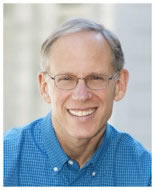 Every few weeks, we learn more about the seemingly limitless potential of artificial intelligence. As we head toward a world defined by self-driving cars, drone-powered warfare and AI-based chat bots, what's left for humans to do? Intriguingly, our greatest strengths are so familiar to us that we sometimes forget how valuable -- and hard to emulate -- they can be. The world's labor markets still need our creativity, curiosity and empathy. This talk will cover a variety of labor-market surprises, showing how the humanist's perspective is becoming more valuable, even as technology marches forward.
Every few weeks, we learn more about the seemingly limitless potential of artificial intelligence. As we head toward a world defined by self-driving cars, drone-powered warfare and AI-based chat bots, what's left for humans to do? Intriguingly, our greatest strengths are so familiar to us that we sometimes forget how valuable -- and hard to emulate -- they can be. The world's labor markets still need our creativity, curiosity and empathy. This talk will cover a variety of labor-market surprises, showing how the humanist's perspective is becoming more valuable, even as technology marches forward. 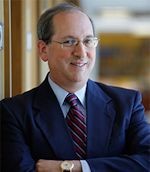 The challenges for free expression on our campuses have never seemed greater. Given the coarsening of our public discourse and the lack of clarity about our core value of free expression, it is perhaps no surprise that this issue presents itself with such urgency on our campuses today. We must recommit ourselves to first principles; in particular, three:
The challenges for free expression on our campuses have never seemed greater. Given the coarsening of our public discourse and the lack of clarity about our core value of free expression, it is perhaps no surprise that this issue presents itself with such urgency on our campuses today. We must recommit ourselves to first principles; in particular, three: 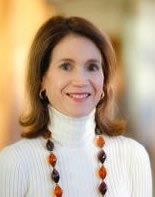 At first glance it appears that apart from a national heritage, Henry James and Walt Whitman shared little in common. Of different generations and social strata, writing in different genres and styles, and displaying contrasting sartorial identities, the two never met and seemed destined to ignore each other from their respective abodes on either side of the Atlantic. And yet, late in James’s life, at a vulnerable moment, he re-encountered Whitman’s final 1891 deathbed version of Leaves of Grass. On the cusp of a new century, sixty-five years old, and about to invent a new literary mode, James’s turn towards Whitman enabled him to regain his lost identity, transforming him emotionally and artistically.
At first glance it appears that apart from a national heritage, Henry James and Walt Whitman shared little in common. Of different generations and social strata, writing in different genres and styles, and displaying contrasting sartorial identities, the two never met and seemed destined to ignore each other from their respective abodes on either side of the Atlantic. And yet, late in James’s life, at a vulnerable moment, he re-encountered Whitman’s final 1891 deathbed version of Leaves of Grass. On the cusp of a new century, sixty-five years old, and about to invent a new literary mode, James’s turn towards Whitman enabled him to regain his lost identity, transforming him emotionally and artistically.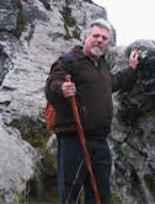 When people think of archaeologists, they often picture an Indiana Jones-type character toiling away amongst ancient ruins. Archaeology can be that and yet it can be so much more. For almost 40 years, I’ve been constructing an archaeology of the 1960s, that time of tremendous social and political upheaval in our country. Contemporary archaeology searches for new meaning in the recent past: My recent work has examined the archaeology of a famous, Grateful Dead-associated hippie commune that existed from 1967 to 1969, and a training ground used by the U.S. Marine Corps Reserve from 1961 to 1969. Numerous artifacts recovered from these two sites are useful in examining cultural stereotypes. In this talk, we will explore some of those artifacts, including 93 vinyl records and 360 spent cartridge cases, and describe what they can tell us about the 1960s that may challenge our memories or expectations.
When people think of archaeologists, they often picture an Indiana Jones-type character toiling away amongst ancient ruins. Archaeology can be that and yet it can be so much more. For almost 40 years, I’ve been constructing an archaeology of the 1960s, that time of tremendous social and political upheaval in our country. Contemporary archaeology searches for new meaning in the recent past: My recent work has examined the archaeology of a famous, Grateful Dead-associated hippie commune that existed from 1967 to 1969, and a training ground used by the U.S. Marine Corps Reserve from 1961 to 1969. Numerous artifacts recovered from these two sites are useful in examining cultural stereotypes. In this talk, we will explore some of those artifacts, including 93 vinyl records and 360 spent cartridge cases, and describe what they can tell us about the 1960s that may challenge our memories or expectations.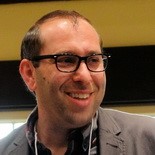 Violence in the name of religion dominates our headlines. Coverage often centers on Islamist groups, such as al-Qaeda and ISIS. Yet, religious hostility is not limited to one faith tradition, as evidenced by the increased activity of militant Buddhist monks in Southeast Asia. Nor, is it confined to distant locales, as the latest attacks in the UK and France remind us. How are we to understand such violence?
Violence in the name of religion dominates our headlines. Coverage often centers on Islamist groups, such as al-Qaeda and ISIS. Yet, religious hostility is not limited to one faith tradition, as evidenced by the increased activity of militant Buddhist monks in Southeast Asia. Nor, is it confined to distant locales, as the latest attacks in the UK and France remind us. How are we to understand such violence?
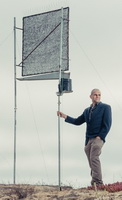 In light of issues of water scarcity worldwide, significant attention has been focused on alternative means of obtaining water for human use and consumption. Among possible ideas that come up for consideration is the collection of water from fog. While evidence exists that indicates that fog water collection has been used as a source of water in some cases dating back thousands of years, recent research efforts into large-scale fog water collection have occurred mostly over the last 50 years.
In light of issues of water scarcity worldwide, significant attention has been focused on alternative means of obtaining water for human use and consumption. Among possible ideas that come up for consideration is the collection of water from fog. While evidence exists that indicates that fog water collection has been used as a source of water in some cases dating back thousands of years, recent research efforts into large-scale fog water collection have occurred mostly over the last 50 years.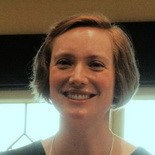 Humans have trouble cooperating, even with plenty of dialogue. So, how can organisms cooperate when they can’t even speak? Plants and fungi must do this all the time. My research focuses on how they manage it.
Humans have trouble cooperating, even with plenty of dialogue. So, how can organisms cooperate when they can’t even speak? Plants and fungi must do this all the time. My research focuses on how they manage it.